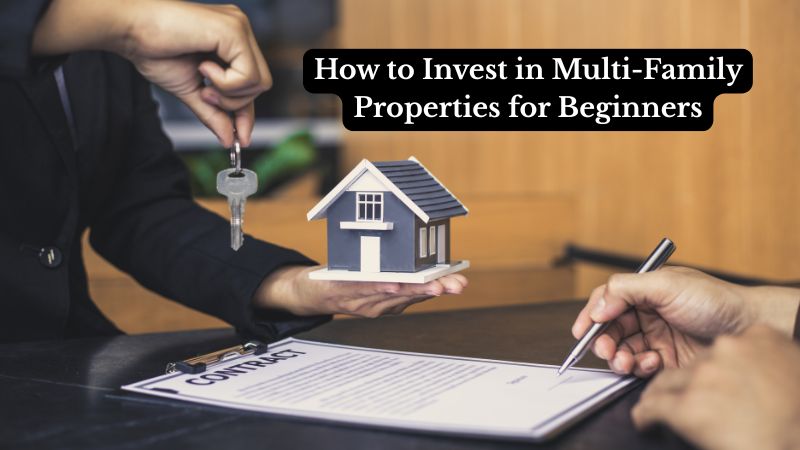Investing in multi-family properties can be one of the smartest moves for beginners in real estate. Unlike single-family homes, these buildings have multiple units, offering more income potential from a single investment. Whether it’s a duplex or a large apartment building, multi-family properties generate consistent rental income and are often less risky than other real estate investments. They are a great way to build long-term wealth and financial stability.
This guide breaks down everything you need to know to get started. You’ll learn the basics, how to find the right property, finance your investment, and manage tenants successfully. It’s all explained in a beginner-friendly way with simple tips and clear steps.
What Is a Multi-Family Property?
A multi-family property is any residential building that has more than one unit. This includes duplexes (two units), triplexes (three units), fourplexes (four units), and larger apartment complexes. These properties can be owner-occupied or entirely rented out to tenants.
The main advantage of multi-family properties is the ability to generate multiple income streams from a single location. For example, instead of earning rent from just one unit, you could earn from four or even more. This makes it easier to cover expenses and still see profit.
Why Invest in Multi-Family Real Estate?
There are many reasons why beginners should consider multi-family real estate. First, the cash flow potential is stronger than with single-family homes. Even if one tenant moves out, others remain, helping to maintain income.
Second, these properties tend to appreciate over time, especially in growing neighborhoods. That means your investment could increase in value the longer you hold it.
Third, they are often easier to finance than you’d expect. Banks see multi-family investments as lower risk because of the steady income stream. Plus, if you live in one of the units, you may qualify for lower interest rates and better loan terms.
Start With a Small Multi-Family Property
If you’re new, start small. A duplex or triplex is the perfect entry point into multi-family investing. These smaller properties are more affordable, easier to manage, and less intimidating for beginners.
You can even live in one unit and rent out the others. This strategy, called “house hacking,” helps you reduce or even eliminate your housing costs while building equity in a valuable asset.
Small multi-family homes also require fewer repairs and come with lower property taxes and insurance costs than larger apartment buildings.
Understand the Financial Basics
Before jumping in, it’s important to understand the numbers. First, calculate your potential rental income. Look at local rent prices for similar units and add up what you might earn each month.
Next, subtract all expenses. These include your mortgage, property taxes, insurance, maintenance, management fees, and utilities (if paid by you). What’s left is your cash flow—the money you actually keep.
Always leave room for unexpected costs. A good rule of thumb is to set aside 10% of rent for repairs and maintenance.
Find the Right Location
Location is one of the most important factors in real estate. Look for neighborhoods with strong rental demand, low vacancy rates, and potential for growth.
Areas near schools, hospitals, public transport, and job centers are especially attractive to renters. Also, research the local economy, population trends, and crime rates.
Visit the neighborhood during different times of day. Talk to local residents or business owners. Get a feel for the community before you invest.
How to Finance Your First Property
There are several ways to finance a multi-family property. The most common is a traditional mortgage through a bank or credit union. If you’re buying a duplex, triplex, or fourplex and plan to live in one unit, you can apply for an FHA loan. These require low down payments and have easier qualification requirements.
Other financing options include VA loans (for veterans), conventional loans, or working with private lenders. Some investors also partner with friends or family to pool resources and share ownership.
Whichever method you choose, get pre-approved before you start shopping. This will give you a clear budget and make you more competitive when making offers.
Analyze the Property Carefully
Before buying, run a thorough analysis of the property. Start with a physical inspection to uncover any hidden issues. Check plumbing, electrical, roofing, and the condition of each unit.
Then, analyze the financials. Ask for rent rolls, utility bills, and maintenance records. Calculate the return on investment (ROI), cap rate, and cash-on-cash return. These numbers tell you how profitable the property could be.
Don’t rely on the seller’s claims. Do your own research or work with a real estate agent experienced in investment properties.
Work With a Real Estate Agent
A real estate agent who specializes in investment properties can be a huge help. They know which neighborhoods are best for rental properties, how to spot a good deal, and how to handle the paperwork.
An agent can also help you find off-market properties and negotiate favorable terms. This is especially important for beginners who may not feel confident navigating the process alone.
Choose someone local who understands the rental market and has experience working with investors.
Plan for Property Management
Once you buy the property, you’ll need to manage it. You can do it yourself or hire a professional property manager. Self-managing saves money but requires time, organization, and communication skills.
You’ll be responsible for screening tenants, collecting rent, handling repairs, and dealing with complaints. It’s a big job, especially if you have multiple units.
Hiring a property manager costs money (typically 8-12% of monthly rent), but they take care of everything. This is a good option if you don’t live near the property or have a full-time job.
Screen Tenants Properly
Good tenants make your life much easier. Bad tenants can cost you money and stress. That’s why it’s important to screen applicants thoroughly.
Always check credit scores, rental history, employment status, and references. Run background checks and verify income. Have clear rental criteria and stick to it.
Use a written lease that covers rent, rules, deposits, and responsibilities. This protects you and your tenants in case of disputes.
Keep Learning and Growing
Real estate investing is a learning journey. The more you know, the more confident you’ll feel. Read books, watch videos, listen to podcasts, and talk to other investors.
Join real estate groups online or in your local area. Attend workshops or meetups. These resources help you avoid mistakes and make smarter decisions.
Over time, you may grow your portfolio to include larger properties or different types of real estate. Start with one good investment and build from there.
Final Thoughts on Getting Started
Investing in multi-family properties is a smart path for beginners who want to build wealth and generate income. Start with a small property in a good location, run the numbers carefully, and understand your financing options.
Be patient, do your research, and don’t rush. With the right plan, you can turn a single property into a profitable real estate portfolio.
Stay focused, keep learning, and soon you’ll be well on your way to success in the world of multi-family real estate.



